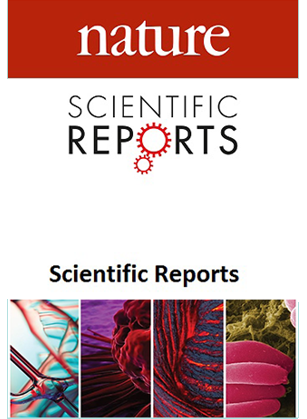煤炭开采对陆地生态系统的影响及弹性模量。
摘要
在全球实施节能低碳政策的背景下,能源消费结构逐渐演变为“多元化能源结构”。考虑到中国能源资源禀赋的特点和现阶段社会经济发展的实际情况,煤炭作为中国主要能源的地位在短期内难以改变。然而,煤矿开采不可避免地会导致一系列生态问题。确定煤炭开采对陆地生态系统的影响并采取有弹性的恢复措施是推进绿色煤炭开采工作和实现碳峰值和碳中和目标的关键先决条件。以中国露天煤矿为例:(1)考察了中国露天煤矿的基本属性及其空间分布演变规律。在此基础上,阐述了五大露天煤矿的生命周期阶段和各自的特点。将矿区生命周期划分为四个不同的发展阶段:初始阶段、加速阶段、稳定阶段和衰退期。通过对矿区生态系统演化类型的考察,阐明了矿区生命周期阶段与生态系统演替之间的空间关系。在加速稳定发展阶段,煤炭开采对生态系统的不利影响长期呈增加趋势,导致生态系统关键要素逐渐超过其阈值。生态系统失衡,受到严重破坏,逐渐退化或极度退化。矿区生态演替类型可分为陆源演替形成新的陆源生态系统、陆源生态系统向水生生态系统过渡和水陆共生生态系统的发展。(2)利用遥感数据结合煤炭生产信息,定量评价了地表采煤对陆地生态系统的影响。2022年,五大露天煤矿受煤炭开采活动影响的面积约占中国陆地总面积的0.02%。同时,全国所有露天煤矿的受灾面积加起来约占中国陆地面积的0.13%。露天煤矿开采活动对地表有重大影响。(3)结合生态弹性理论,基于弹性强度和弹性极限的概念,建立了考虑景观多样性、植被覆盖度、土地类型和气候等因素的矿区生态系统弹性模量模型。结合生态系统综合完整性指数,建立了煤矿矿区生态阈值识别的概念模型。矿区生态系统的综合完整性在跨越弹性点、屈服点和突变点三个不同的生态阈值时发生显著变化。在生态系统弹性弹性点、屈服点、突变点三个生态阈值处应有一个相应的常数(或常数区间),该常数与矿区开采作业规模、开采技术、使用寿命密切相关。所建立的生态阈值识别模型和弹性模量模型为管理煤炭资源开采过程中生态系统变化的进程和趋势提供了理论参考和实践依据,使矿区生态恢复更具针对性和针对性。



The energy consumption structure is gradually evolving into a "diversified energy structure" against the backdrop of the global implementation of energy-saving and low-carbon policies. Coal, as the main energy source in China, is difficult to change in the short term, given the characteristics of China's energy and resource endowments, as well as the actual social and economic development at the present stage. Nevertheless, coal mining inevitably leads to a range of ecological issues. Identifying the impact of coal mining on terrestrial ecosystems and adopting resilient recovery measures are crucial prerequisites for advancing green coal mining efforts and attaining carbon peaking and carbon neutrality goals. Using China's open-pit coal mining as a case study: (1) the research examines the fundamental attributes and evolving patterns of spatial distribution among these mines within the country. Furthermore, it delineates the life cycle stages and distinctive features of the five principal open-pit coal mines. The life cycle of a coal mining area is divided into four distinct development phases: the initial phase, the accelerated phase, the stable phase, and the declining phase. The spatial relationship between the life cycle stages of coal mining and ecosystem succession is elucidated by examining the evolutionary types of ecosystems within coal mine area. In the accelerated and stable development phase, the adverse effects of coal mining on the ecosystem are in a long-term increasing trend, causing the key elements of the ecosystem to gradually surpass their threshold values. The ecosystem is out of balance, severely damaged, and gradually undergoing degradation or extreme degradation. The types of ecological succession in coal mining areas can be categorized as follows: terrestrial succession leading to a new terrestrial ecosystem, terrestrial to aquatic ecosystem transitions, or the development of an amphibious symbiotic ecosystem. (2) The research quantitatively assessed the impact of surface coal mining on terrestrial ecosystems by utilizing remote sensing data in conjunction with coal production information. In 2022, the affected areas of the five major open-pit coal mines due to coal mining activities amounted to approximately 0.02% of China's total land area. Meanwhile, the nationwide affected areas of all open-pit coal mines combined reached to approximately 0.13% of China's land area. Open-pit coal mining activities have a significant impact on the surface. (3) By incorporating the ecological resilience theory, we establish a model for the ecosystem's elastic modulus in coal mining areas, taking into account landscape diversity, vegetation coverage, land type, and climate factors, which are based on the concepts of elastic strength and elastic limit. A conceptual model for recognizing ecological thresholds in coal mining areas is developed by incorporating the comprehensive integrity index of the ecosystem. The comprehensive integrity of the ecosystem within a coal mining area undergoes significant alterations as it crosses three distinct ecological thresholds: the elastic point, the yield point, and the mutational point. There should be a corresponding constant (or constant interval) at the three ecological thresholds of ecosystem resilience, the elastic point, the yield point, and the mutational point, which is closely related to the scale of mining operations, mining technology, and the service life in coal mining areas. The established models for identifying ecological thresholds and the resilience modulus degree serve as both theoretical references and practical bases for managing the progress and trends of ecosystem changes during coal resource extraction, making ecological restoration in coal mine areas more target-oriented and specific.

 求助内容:
求助内容: 应助结果提醒方式:
应助结果提醒方式:


